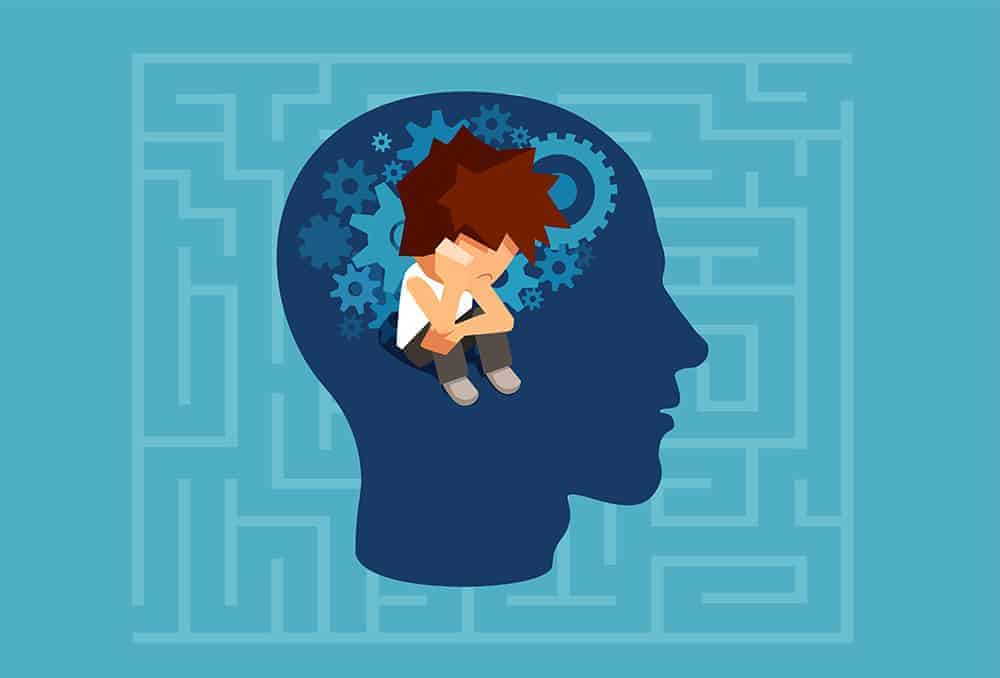ADHD (Attention Deficit Hyperactivity Disorder) is a common neurological disorder recognized in early childhood and often continuing into adulthood. People with ADHD tend to have difficulty paying attention or controlling impulsive behaviors and may be overactive.
ADHD affects many aspects of daily life and is often associated with difficulty learning. However, ADHD is not itself considered a learning disability.
Learning disabilities are more common in people with ADHD, and the two frequently co-exist. ADHD accompanied by learning difficulty is usually a signal to test for learning disabilities.
ADHD is the most common learning disorder, affecting 1 in 2 students in every classroom.
Types of ADHD
ADHD presents differently in different people and is broken down into two main clusters:
Inattentive ADHD
Inattentive ADHD means that the person has difficulty staying focused on the task at hand. People with predominantly inattentive ADHD often daydream or are easily sidetracked by occurrences in their surroundings.
Hyperactive-Impulsivity ADHD
People with predominantly hyperactive ADHD have a hard time regulating their activity. They tend to fidget and talk more than most people and may have difficulty remaining still or seated.
Individuals with hyperactive ADHD tend to feel restless or impulsive, which may cause them to interrupt others or speak at inappropriate times. Individuals may also have trouble controlling impulsive behavior and will act rashly without thinking.
Combined Hyperactivity and Inattentiveness
Both types of symptoms are present in the individual.
Signs and Symptoms
Signs in Children
Children are known to have bouts of hyperactivity or difficulty focusing. But children with ADHD usually do not grow out of such tendencies. While many symptoms of ADHD are part of normal behavior, they may become disruptive in people with ADHD.
Possible signs of ADHD in children include:
- Daydreaming
- Forgetfulness
- A tendency to lose or misplace items
- Squirming or fidgeting
- Excessive talking
- Impulsive, careless, and risky behavior
- Trouble sharing or taking turns
- Difficulty getting along with other children
Signs in Adults
Signs and symptoms of adult ADHD are similar to those of children but are better defined in terms of adult life facets.
Signs of ADHD in adults include:
- Impulsive behavior
- Trouble with organization and prioritizing tasks
- Difficulty focusing
- Poor time management skills
- Poor planning
- Difficulty multitasking
- Mood swings and difficulty keeping temper
- Difficulty following through on tasks
- Trouble coping with stress
As with children, symptoms of adult ADHD affect most people at some point or other. If your issues tend to resolve themselves after a period, you likely do not have ADHD.
Adult ADHD is only diagnosed when problems persist enough to interfere with daily life. The symptoms can usually be traced back to early childhood.
Causes
The exact causes of ADHD are unknown, but current research suggests genetics play a significant role in the condition’s development.
Aside from genetics, other possible causes of ADHD include:
- Brain injury
- Exposure to a toxic substance such as lead during pregnancy or early childhood
- Alcohol and tobacco consumption during pregnancy
- Premature birth
- Low birth weight
There is little evidence to support commonly held beliefs that factors such as eating too much sugar, watching too much TV, or circumstances such as poverty or family problems cause ADHD. However, such events and factors may exacerbate symptoms.
Diagnosing ADHD
Diagnosing ADHD is a multi-step process. As many other conditions have symptoms similar to ADHD, there is no single way to test for ADHD.
Diagnosis often involves a medical exam, which includes hearing and vision tests. If you suspect your child has ADHD, talk to a medical practitioner. Your doctor will likely want to take a family history and speak to teachers and other adults about your child’s behavior in different settings. Depending on needs, they can even advise on ADHD therapy options.
ADHD in Boys vs. Girls
ADHD often goes undiagnosed in girls, as their symptoms are less overt. Both girls and boys experience academic and social setbacks due to ADHD, but boys are three times more likely to be diagnosed.
Girls tend to exhibit more internal ADHD symptoms, such as inattentiveness and low self-esteem. Boys tend to be physically aggressive, while girls tend to be verbally aggressive. Due to low diagnosis, ADHD is more likely to affect mental health in girls.
ADHD in Adults
Adult ADHD can be difficult to diagnose. Many ADHD symptoms mirror those of other conditions like depression or anxiety. Since another mental health disorder often accompanies adult ADHD, it frequently goes undiagnosed.
The relationship between ADHD and Learning Disabilities
While not a learning disability in and of itself, ADHD does make learning more difficult. ADHD affects the brain’s executive functions, i.e., the ability to focus, engage, and use memory to learn.
People with ADHD can absorb information in the same capacity as most people; the trouble lies in their difficulty focusing on the information presented or remaining still enough to pay attention to a class.
Learning disabilities are often present in people with ADHD. ADHD may be accompanied by learning disabilities like Dyslexia (Reading Disorder), Dyscalculia (Math disorder), Dyspraxia (Motor skill disorder), and others.



